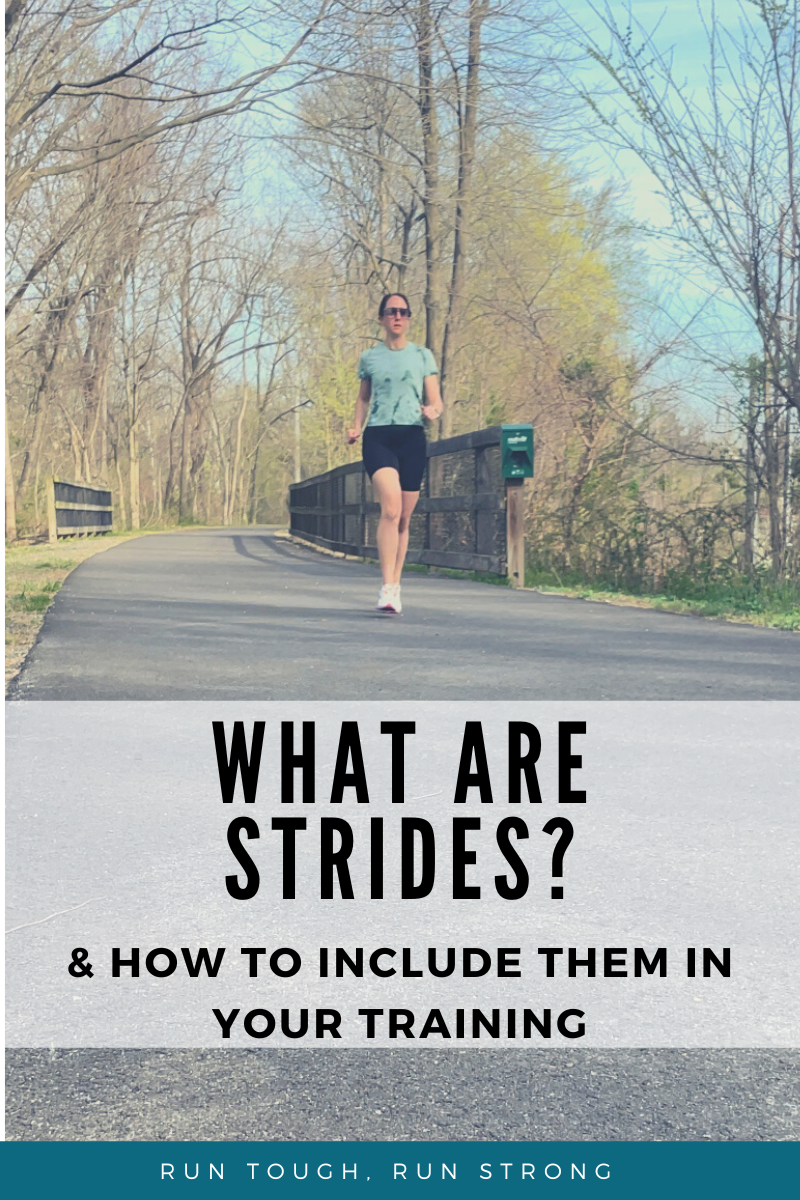What Are Strides & How to Include Them in Your Training
Most good training plans will call for strides at some point or another. But you may be wondering how to execute them properly or what the point is to include them. Whether your goal is to improve form, increase efficiency, or run faster in general, strides have purpose in your running.
Very simply put, a stride is a gradual ramp up of speed followed by a deceleration. You may cover a single stride in 100m or less. A stride starts from a jog, accelerates to about 95% of your max speed, and finishes with a slowdown ending in a walk or stop. Completing one stride should only take about 20-30 seconds.
Although strides can be a great way to introduce speedwork to a runner who’s never included speed before, they are not meant to be overly taxing or get your heart rate all the way up. Strides are typically followed by a complete recovery and the next stride should not be performed until you feel fully recovered.
Who Benefits from Strides?
Whether you’re training for your first 5k or preparing for your 10th marathon, strides can greatly benefit your running. Here are some of the types of runners who could use strides:
Recently injured runner who has returned to easy running and cleared to start adding in speed
Runners looking to maintain speed in the off-season
Runners wanting to improve running economy and form
Short distance runners needing to add power to their training
Newer runners who have never added in speedwork before
Really any runner can find some benefits from adding strides!
How and When to Include Strides
There are several ways to include strides. They can be done after an easy short or easy long run, as part of your warmup for a training workout, or prior to a race.
After a Short Run- Including 4-6 strides of about 100m after a short easy run are a way for your body to learn how to go from aerobic to anaerobic running. The main focus is good form and keeping the body relaxed. A full recovery should be taken after each stride. If your stride goes too long, or you neglect the recovery, a stride changes from a drill to a full-blown anaerobic workout.
After a Long Run- More experienced runners may add strides after a long run. This helps the runner prepare for a finishing kick in a race or shifting gears in speed when necessary in longer distances.
Warmup for Training Workout or Race- Depending on the intensity of pace prescribed, warmup strides should get progressively faster to prepare the body for the work ahead. For example if you’re racing 1 mile, then your strides may reach a faster pace versus preparing to race a marathon. The focus is still good form into a gradual slowdown of speed. You don’t want to expend too much energy before the true hard part!
Where to Do Strides
Where you do strides may depend on the reason you’re doing them in the first place. Strides performed after an easy run can be done on a flat road or track. If you are using strides to re-introduce speedwork after an injury comeback, you may want to try strides on a soft surface such as grass. Take it a step further, for runners who are using stride to increase efficiency, try barefoot strides on grass. If you’re doing strides to warmup for a hill repeat workout- you guessed it- do your strides on a slight hill. Hill strides are also a great way to work on form and power.
You may be wondering- what if I am running on a treadmill? The answer is yes! You can still run strides on a treadmill by including them in your last mile. Increase pace quickly to mimic acceleration, but only spend about 3-5 seconds at the highest speed where you still feel controlled. Then quickly decrease speed to a pace that’s ~ 30 seconds slower than easy pace. Run easy or walk for 1-2 mins before the next stride. Just like outdoor strides, you should aim to perform 4-6.
Tips for Doing Strides
If strides still seem intimidating you may be overthinking it! Here are some tips:
Don’t stress the numbers. Exact distance, time or pace are not nearly as important for strides compared to an interval or track workout.
Focus on running relaxed. A major goal of strides is to get you comfortable with speed.
Avoid trying to “beat” every previous stride. Again, these are ~95% of your max speed, not all out.
Walk back to your starting point to ensure a full recovery. Let your heart rate come down between strides.

